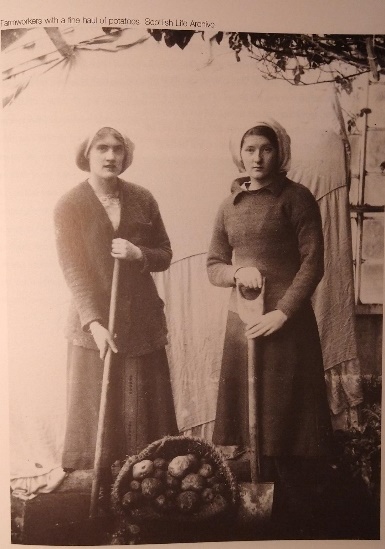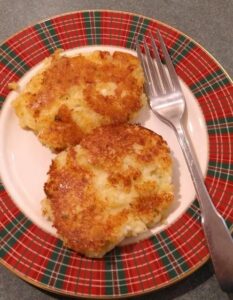Carolyn McDonald Graf
Potatoes originated in the Andes of South America. The cultivation of potatoes may go back 10,000 years, but they don’t preserve well so it is difficult for archeologists to prove this. The earliest remains have been found in coastal Peru dating to 2500 BC. Potatoes are found as designs on pottery vessels which may indicate their importance and perhaps storage.

These South Americans prepared their potatoes much the same as modern methods by mashing, boiling, roasting, and stewing. Other methods involved letting them freeze several times and then squeezing out the liquid, creating a lighter, dry product. This became chuno and was the major cash crop of the Andean Indians. Its advantages included longevity and its usefulness to armies and travelers. The Spanish fed chuno to the silvermine workers who created great wealth for the Spanish government.
The cultivation of potatoes spread around the world through various trade routes. It arrived in Europe sometime before the end of the 16th century by two different ports of entry: the first in Spain around 1570, and the second via the British Isles between 1588 and 1593.
They were first eaten in the homes of wealthy Scots in the 1600s. There are records of a few potato gardens in Edinburgh in 1725 and were first cultivated in Stirling in 1739. Potatoes were not known in the Highlands and Islands before 1743 and were shunned by crofters and farmers. The Ministers of the Kirk encouraged this as potatoes were not mentioned in the bible.
There is a story that the islanders of Skye were forced to grow potatoes by the MacDonald Chieftain. They grew them and then dumped them all on his doorstep saying “ye can force us to grow them but ye canna force us into the sin of eating them”. Gradually potatoes were accepted and became a major staple. They grew well in the rocky soils, stored well, and were filling.
Then, in 1845, the blight came. Due to the lack of genetic diversity, the blight spread rapidly. The following year, the crop failed completely. Famine spread through the Highlands, the Hebrides, Orkney and Shetland. It could have caused devastation equal to that seen in Ireland, but aid was given by landowners, the Free Church and, eventually, the government.
Economically the potato is credited with expanding the industrial revolution. It was a cheap source of nutrients and was easily grown in small plots tended in the cities by factory laborers. In the coal areas, the added nutrients and calories created a population increase that created workers for that industry.
In the 1900s the creation of blight resistant potato varieties again put potatoes back on tables. The invention of French fries and potato chips has added to the modern success of the potato industry. Crowdie Potato Cake are among the many ways Scots enjoy potatoes today.
Crowdie Potato Cakes

- 1 pound hot mashed potatoes
- 1 egg yolk
- 2 oz. crowdie cheese (ricotta cheese is a suggested substitute)
- 3-4 ounces butter
- 1 tablespoon chopped chives
- Salt and pepper
Mix the egg yolks and the cheese into the hot potatoes with 2 ounces of butter, the chives, salt and pepper. Shape into small rounds ¾ of an inch thick. Fry in hot butter until golden brown on both sides.
Sources
https://blog.historicenvironment.scot/2017/12/scottish-food-history/
https://en.wikipedia.org/wiki/History_of_the_potato
Hieland Foodie, Clarissa Dickson Wright with Henry Crichton-Stuart, NMS Publishing Limited, Edinburgh EH1 1JF 1999. P.82

